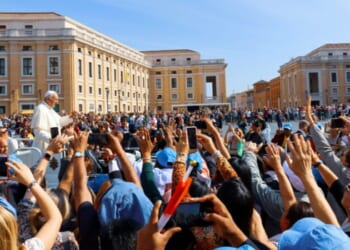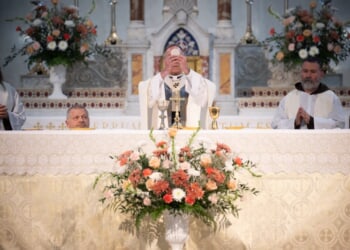Noble objectives notwithstanding, Operation Eagle Claw was too complicated to be successful.
In addition to ANZAC Day, this past April 25, 2025, also marked a significant and tragic anniversary in U.S. military history: the forty-fifth anniversary of Operation Eagle Claw, the abortive attempt to rescue fifty-three American hostages in Iran who had been abducted from the U.S. Embassy in Tehran.
The National Interest now looks at that noble but ill-fated mission and its repercussions.
Prelude to Eagle Claw
Shah Mohammad Reza Pahlavi abdicated on January 16, 1979. On November 4 of that same year, 3,300 student supporters of Ayatollah Ruhollah Khomeini stormed the U.S. Embassy and took sixty-six hostages. Thirteen of the hostages were released within the month, but that still left fifty-three Americans languishing in captivity. Five months’ worth of negotiations to try to free the hostages proved fruitless, so then-U.S. president Jimmy Carter approved a military rescue mission, which would be commanded by U.S. Army colonel Charles Alvin “Chargin’ Charlie” Beckwith, the creator of the elite Delta Force. The mission was dubbed Operation Eagle Claw and would be Delta’s first real-world operation.
Eagle Claw’s Tragic Unraveling
Noble objectives of the mission notwithstanding, Eagle Claw, in the words of U.S. Navy SEAL Team 6 founding commander Richard “Demo Dick” Marcinko, “got too g*ddamn complicated,” a violation of the military principle of KISS “Keep In Simple, Stupid.” Indeed, Carter’s secretary of state, Cyrus Vance, filled with a sense of foreboding, resigned a few days after the president authorized the mission.
The game plan called for three U.S. Air Force MC-130 Combat Talon transport birds carrying 132 Army Rangers and Delta commandos and three U.S. Air Force EC-130 Compass Call planes carrying supplies and fuel to take off from Masirah Island, Oman, to a remote salt flat, designated Desert One, 200 miles southeast of Tehran. They were to rendezvous with eight U.S. Navy RH-53D Sea Stallion helicopters, which embarked from the deck of the aircraft carrier USS Nimitz, in the Arabian Sea for the 600-mile trip to Desert One.
(Meanwhile, a few weeks prior to the execution of Eagle Claw, U.S. Air Force combat controllers secretly infiltrated Iran to prepare the Desert One landing site.)
Long story short, eventually the rescue team was supposed to make a 65-mile overland trek into Tehran, storm the embassy, free the hostages, and then rally at either the embassy compound or a nearby soccer stadium to be picked up by the helicopter force.
The mission officially kicked off on April 24, 1980, and came to an end the following day. From the get-go, things started to go awry. One of the Delta operators participating in the mission, now-retired Captain Wade Ishimoto, recounts a particularly hair-raising story in the prologue of his autobiography, The Intoku Code: Delta Force’s Intelligence Officer—Doing Good In Secret, wherein an Iranian fuel truck came bearing down upon him and two of his teammates, Specialist Robert Rubio and Staff Sergeant Littlejohn:
“I knew there was no way I was going to stop this truck with an M-16 rifle, which fires 5.56 mm bullets, compared to the 7.62 mm of an M-60 machine gun. Nonetheless, I kept firing. The truck kept coming … Whooosh! Rubio had fired [a LAW rocket] at the truck. Booo-om! It hit the truck—a 3,000-gallon gasoline tanker! Well, that certainly brought the truck to a halt.”
Things only got worse from there. As described by the U.S. Army Airborne & Special Operations Museum:
“The aircraft encountered a haboob, a violent wind-driven sand storm common in desert. This caused extreme visibility issues, damage to the aircrafts, and sickness with the crews. President Carter and his staff received the news and decided to abort the mission … As the force prepared to depart, a RH-53D helicopter crashed into a C-130 carrying extra fuel for refueling igniting a fire that killed 5 Airmen and 3 Marines.”
In addition to the horror of the lives lost, the special operations community, and America as a whole, was utterly humiliated on the world stage.
The Aftermath of Operation Eagle Claw
As “Demo Dick” Marcinko also noted, Carter tried to make “Charging Charlie” Beckwith the sole scapegoat of the failure at Desert One. However, that wasn’t enough to save Carter’s political neck, as he lost his 1980 presidential reelection bid to Ronald Reagan; the hostages were finally released on January 20, 1981, the day of Reagan’s inauguration.
Khomeini died on June 3, 1989, but Iran remains under the iron grip of the mullahs (who are cut from the same religious extremist cloth as Khomeini) to this day, in spite of nominally reformist Iranian presidents who have popped up on occasion (such as Seyed Mohammad Khatami, who served from 1997 to 2005).
However, there was at least one silver lining behind the cloud of the Eagle Claw. The lessons learned from that operation led to the establishment of United States Special Operations Command (USSOCOM, aka SOCOM)—headquartered at Fort Bragg, North Carolina—in order to ensure better coordination between the special operations forces across the spectrum of the American armed services. SOCOM was officially established on April 16, 1987, and one of the units birthed with the creation of that unified combatant command was the 160th Special Operations Regiment aka “The Night Stalkers.”
Just five months thereafter, the tandem of Night Stalkers and the SEALs would get at least a small degree of revenge against the ayatollah’s forces thanks to Operation Prime Chance.
As CPT Hashimoto said regarding his fallen brethren at a private event I attended this past weekend, “They did not die in vain.”
About the Author: Christian D. Orr
Christian D. Orr was previously a Senior Defense Editor for National Security Journal (NSJ) and 19FortyFive. He is a former Air Force Security Forces officer, Federal law enforcement officer, and private military contractor (with assignments worked in Iraq, the United Arab Emirates, Kosovo, Japan, Germany, and the Pentagon). Chris holds a B.A. in International Relations from the University of Southern California (USC) and an M.A. in Intelligence Studies (concentration in Terrorism Studies) from American Military University (AMU). He has also been published in The Daily Torch, The Journal of Intelligence and Cyber Security, and Simple Flying. Last but not least, he is a Companion of the Order of the Naval Order of the United States (NOUS). If you’d like to pick his brain further, you can ofttimes find him at the Old Virginia Tobacco Company (OVTC) lounge in Manassas, Virginia, partaking of fine stogies and good quality human camaraderie.
Image: Wikipedia.

















